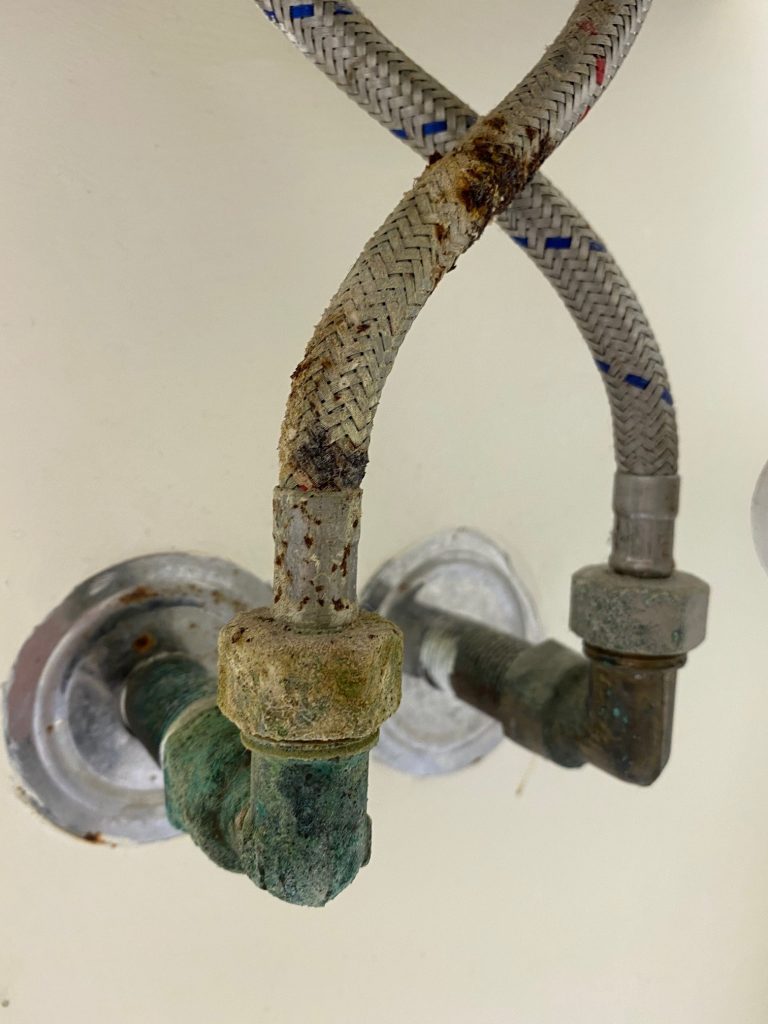Summer in Brisbane is fading fast, and we will soon be spending more time indoors. This is a reminder to spend 5 minutes checking on this important maintenance item in your home.
What is a flexi-hose?
A flexi-hose is a type of plumbing connection which is very common in apartment and townhouse bathrooms, kitchens and laundries, and may also be found near hot waters systems, dishwashers and plumbed fridges. This fitting is the piece that connects the base of your taps to the water outlet in the wall, and is used because it is cheaper and easier to install than copper pipes.
Why should I check it
The flexi-hose is a plastic flexible pipe, which is wrapped in a braided metal external skin. The outside skin can corrode or rust, or the braided metal can loosen, which weakens the fitting and may contribute to it bursting. Flexi-hoses do not last forever, and are notorious for bursting and flooding apartments and townhouses. This $20 connection is often the cause of thousands of dollars of damage to floors, walls, ceilings and furniture.
The good news is that these flexi-hoses are nearly always easily visible by looking inside your cabinetry at the base of your taps:
- Pop your head under the cabinet and look at your flexi hose to inspect for signs or rust, wear or corrosion. It should look uniform and in perfect condition.
- If you can’t see the full length of the hose, try using your phone camera to get a better angle
- Touch the hose lightly and run your hands along its surface, it should feel smooth and uniform without any rough patches.
If it is not in perfect condition, arrange for it to be replaced. Any plumber can replace this part inexpensively.

Who is responsible – owner or body corporate?
This part is within each lot, so it is the responsibility of the individual lot owner. Additionally, if an owner’s flexi-hose bursts and the water leak causes damage to another owner’s property, then the first owner will also be liable to repair the damage caused to their neighbours’ property.
Whilst water leaks are typically insured as part of building insurance, if your property insurer becomes aware of a pattern of claims (e.g. if more than one flexi-hose bursts in a body corporate property), they will often apply an exclusion to this type of claim in future. It is always better to prevent that damage in the first place by proactive inspection and replacement if necessary.
The body corporate is responsible for any flexi-hoses located on common property.
